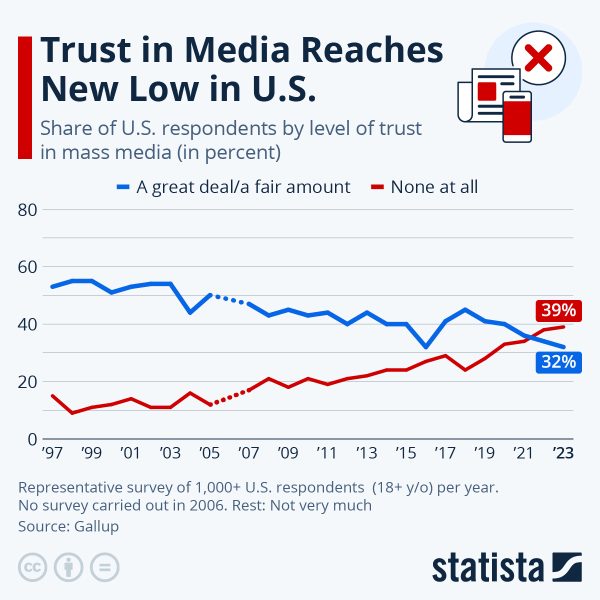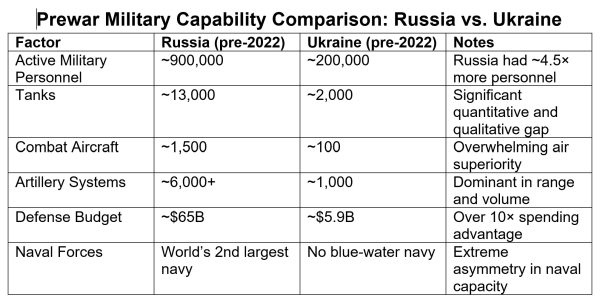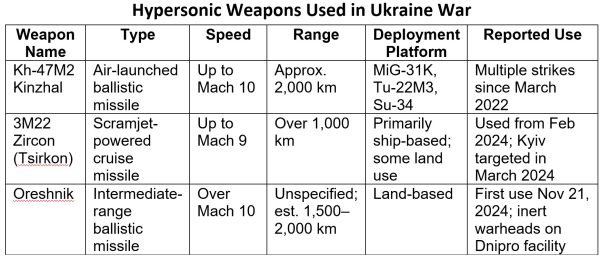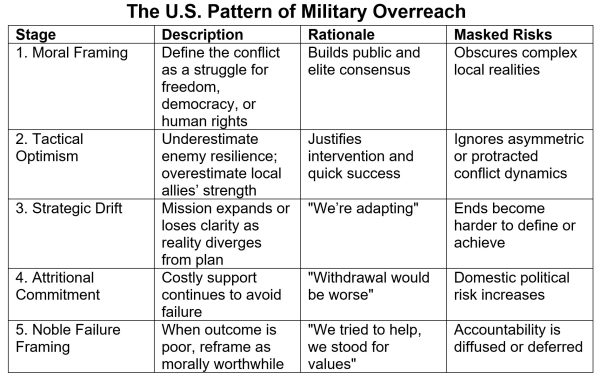I have followed the war in Ukraine closely since 2022, and now that the war seems to be heading toward a conclusion, I would like to offer some observations.
The War Was Planned and Guided by Western Governments
Recent revelations have ended the pretense that Ukraine has been directing its war against Russia independently with only financial and logistical assistance from the U.S. and NATO. In February and March of this year, the New York Times published two articles confirming what had been widely claimed by critics of U.S. involvement in the Ukraine war: that the U.S. played an extensive role in laying the groundwork for military action against Russia and was actively directing the resulting war. The NYT reported that the U.S. established CIA bases in Ukraine years before the Russian invasion and that the war was being directed to a great extent by U.S. military personnel in Germany.
These revelations provided clear evidence that the U.S. and NATO nations were fighting a proxy war against Russia, and not simply lending material assistance to Ukraine. Secretary of State Rubio made this official in an interview statement on March 5, 2025.
Rubio observes Lent and acknowledges U.S. proxy war in Ukraine
Western Mass Media Outlets Are Losing Credibility
The emergence of extensive independent Internet media coverage of the war has undermined the credibility of legacy mass media. The vast amount of video and map data coming from the Ukraine battlefield permits daily observation of shifting positions and battle lines. The fog of war has been lifted to a considerable degree by the indirect confirmation of troop positions by geolocated strikes on those positions. Thus, the belligerents are often undoing their own propaganda when they circulate videos of their attacks on enemy forces.
In general, Ukraine war coverage from independent Internet sources has been days or even weeks ahead of the trends reported in mass media outlets. A good example of such close coverage is the Military Summary Channel. Although “Dima,” the proprietor of the channel, over-editorializes his commentary, his twice-daily reports of battlefield movements are based on multiple information sources weighted by reliability and are usually correct. There is no equivalent coverage from legacy media. Instead, Western mass media continue to spin narratives favorable to Ukraine based on amplified positive events while ignoring or tardily reporting negative battlefield developments.

Representative Military Summary Channel battlefield daily status map
For example, on June 3, 2025, The New York Times published a front page article describing a successful drone attack on Russian airbases as a demonstration of Ukraine’s ability to innovate strategically and offset Russia’s material advantages in the war. There was no mention of the steady crumbling of Ukraine’s defenses in Donbas or Sumy. Thus, the “newspaper of record” created an illusion of Ukraine holding its own while objective information from the battlefield indicated a seriously deteriorating situation.
Unfortunately, public opinion is still heavily influenced by mainstream media outlets that effectively operate as elements of the U.S. military-industrial-complex. Most of these establishment publishers and broadcasters have supported every disastrous U.S. war since 9/11. Although their credibility is weakening, the grip of the major media corporations on public opinion remains strong enough to enable ruinous military adventures.
Ukraine Will Lose the War
The fundamental mismatch between the military potential of Ukraine and Russia was evident at the outset of the war, but this was dismissed by U.S. policy makers because of ideological blindness. It was assumed that Ukraine, aided and supplied by NATO, would prevail against an incompetent and inefficient Russian military.
Apart from the numerical disparity in military strength, national history also weighed against fighting this war. The historic pattern of Russia’s large wars has been that of a stumbling start, then a steady, grinding advance to (often ugly) victory. From Borodino in 1812, to Stalingrad in 1943, to Chechnya in 2000, to Georgia in 2008, whenever Russia has fully committed to a war, it has prevailed. Nevertheless, with a complete disregard for military facts and history, the Washington neocons decided to roll the dice on Ukraine.
After initial reverses in the first years of the Ukraine war, the Russians began adapting rapidly, deploying more troops, revising their tactics, and introducing new weaponry. An ambitious Ukrainian offensive in 2023, spearheaded by Western weapons, failed completely. Beginning with the fall of Avdiivka in February 2024, Russia has steadily gained ground, and Ukraine has faltered. The only Ukrainian offensive of recent note, a push into Kursk in August 2024, was defeated and reversed after several months of fighting that inflicted large material and manpower losses on Ukraine.
Western resources, once flowing abundantly into Ukraine, are now dwindling, leaving Ukraine short of weapons and munitions. Ukraine is increasingly reliant on drones to slow Russian advances, but drones cannot substitute completely for artillery, aircraft, or armored vehicles, all of which are in diminishing supply. Meanwhile, Russia’s large and growing military industrial base is providing a steady flow of weaponry to its forces in Ukraine. The Russian strategy of stretching Ukraine’s insufficient manpower over a long front, coupled with devastating attacks at weak points, is steadily breaking down the defensive lines. Barring direct intervention of NATO forces, Ukraine can only delay defeat while incurring ruinous losses.
Although there is some chance that negotiations will end the war in the near future, the outlook for Ukraine is bleak. Peace terms would not leave prewar Ukraine intact, likely ceding at least Crimea, Donetsk, and Luchansk regions to Russia. Continuation of the war will result in an even more unfavorable outcome, possibly making Ukraine a dysfunctional rump state bereft of its most productive lands and facing costly and uncertain reconstruction.
There Have Been Significant Developments in Conventional Warfare
The Ukraine war has been a testing ground for military technology, and the results will have consequences for future armed conflicts. Tanks and aircraft, formerly considered the dominant weapons in conventional war are being challenged effectively by precision guided missiles and drones. This suggests that asymmetric warfare will become more difficult for nations relying on the superiority of large arsenals of older weapons. Insurgents and small nations will increasingly arm themselves with relatively inexpensive precison-guided weaponry to counter the military capabilities of major powers.
Drones have quickly become a prominent player on the Ukraine battlefield, providing reconnaissance and strike capabilities at a far lower cost than aircraft systems and at low risk to pilots. Basic drones are remotely operated and guided by radio links. These links can be jammed, but the jamming equipment has to be operating on the right frequencies, at the right place, and the right time, so it can’t always stop a drone. The latest drones communicate over a long fiber optic cable, so their signals are immune to jamming. Drones can be launched from almost anywhere, so they are a remarkably versatile weapon, as demonstrated in the recent attack on Russian airbases. With the declining numbers of Ukraine’s artillery and armored vehicles, drones have become the main weapon retarding the advance of Russian forces because large-scale assaults are hazardous in the presence of numerous attack drones. The Ukrainians have also used naval drones that have sunk a few Russian ships in the Black Sea and caused the shifting of Russian naval forces away from Crimea.

Fiber optic guided drone – deadly accurate and jam-proof
Hypersonic missiles have been employed for the first time in large-scale warfare. Russian has used three types of hypersonic missiles in the Ukraine war. Becasuse of their great speed, these missiles are difficult to intercept, even for the Patriot system, and they have tremendous destructive power because of their ability to destroy deeply buried targets, such as command bunkers or equipment storage sites. The Oreshnik missile delivers non-explosive kinetic energy warheads of novel design and reportedly destroyed an extensive underground factory facility. NATO has no conventional missiles with equivalent capabilities.
Glide bombs are relatively simple but highly effective weapons that have made a big contribution to Russia’s increasing success on the battlefield in Ukraine. By attaching folding wings and a guidance system to ordinary aerial bombs Russia has made its enormous inventory of Cold War era bombs convertible to precision munitions. When launched from high altitude, the 50-90 Km range of glide bombs allows their carrier aircraft to stay outside the range of Ukrainian air defenses. These bombs have made it very difficult for Ukraine to hold defensive positions, since the larger glide bombs are capable of destroying even the most formidable fortifications. Although the U.S. has supplied equivalent guided bombs to Ukraine, there are too few Ukrainian attack aircraft left to deliver these bombs in quantity. Russia is dropping about 100 glide bombs daily on Ukrainian positions.
What Comes Next
U.S. foreign policy makers will not learn to avoid another debacle like Ukraine. On the contrary, their ability to walk away from the ruins of Ukraine without any political repercussions will reinforce their belief that they have a repeatable formula for sustaining a bloated military, selling weapons, and starting wars of convenience. This pattern of U.S. foreign policy failures stretches from Vietnam to the present day, with a corresponding trail of death and destruction.
I expect another iteration of this cyclic pattern in a proxy or direct U.S. war against China in the Pacific. Substitute the Taiwan independence red line for the Ukraine in NATO red line, and you have a new casus belli scenario to sell to the public: an evil authoritarian regime in China invading the plucky small democratic nation of Taiwan. Whenever increasing the U.S. defense budget is in doubt, a confrontation in the South China Sea or sending more troops to Taiwan can be arranged to bring China closer to the brink of war. The pernicious cycle of military overreach will likely continue until the U.S. is either exhausted financially or decisively defeated militarily. Meanwhile, thanks to Internet media, the whole world will watch the march of folly.












